Best Call Center Software for Home Improvement | Reviews & Price
A comprehensive list of the best home improvement call center dialer software.
Learn how you can optimize your call center to increase revenue as well as keep customers and employees satisfied with these 8 tips.
Every business wants to grow, or at least maintain profitability. And while sometimes you have to spend money to make money, there is plenty you can do first to make sure you’re getting the most out of your existing resources.
In this post, we’re sharing seven ways to optimize your home improvement call center so you can achieve:
Use these seven strategies to achieve higher standards in your call center with the resources you have.
The first step in optimizing your call center is to change it from a call center to a contact center.
The 20th century was defined by calling. But the 21st century is defined by messaging. And as such, call centers cannot just be “call” centers anymore. They need to use text, email, and phone.
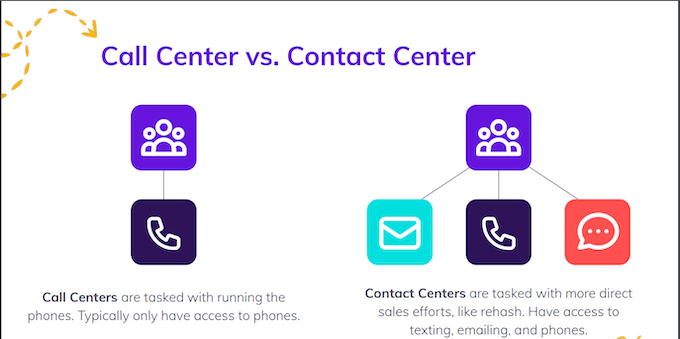
By adding in text and email, not only are you appealing to the communication channels homeowners prefer, but you’re also improving the results you get from all three channels, since the engagement rates within each channel, when employed in concert, are greater than if they were being employed in isolation.
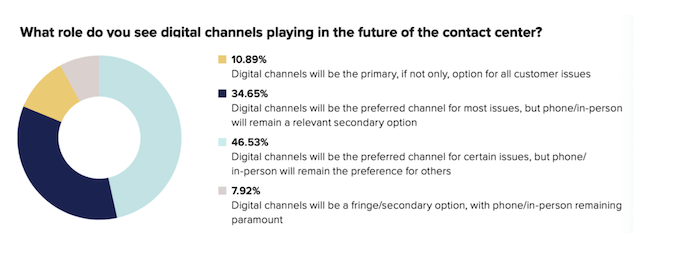
Here are some numbers to back up our claims:

Just as your call center should not limit itself to just one channel of communication (phone), it also should no longer limit itself to just one area of focus, such as new leads. With the automation, customer expectations, and interconnectedness of digital channels today, it’s not only possible, but also more cost-efficient, to evenly distribute your resources and efforts across your entire funnel, from first touch all the way to reviews. This means:
Pre-sale:
Post-sale

How can you handle all of those contacts, in all different stages in their journey, at once? A CRM alone won’t cut it. That’s what our next two tips will cover.
Multi-channel communication improves engagement across your entire funnel, but you need to be able to maintain communication quality as you scale your touchpoints. In other words, you need to be able to keep up with that increased engagement. You need to be able to respond to the people who are responding. Otherwise, you’re just going to have contacts falling through the cracks.
This is where automation comes in. Not automating your responses, but automating your outreach. With Hatch, you can create a series of messages that fire off automatically according to a particular set of targeting conditions.Then, once the person responds, you get a notification and can jump in and engage in real time.
With automation keeping track of which contacts need which messages and when, and sending them out, you now have hours back in your day and can keep up with the people responding.
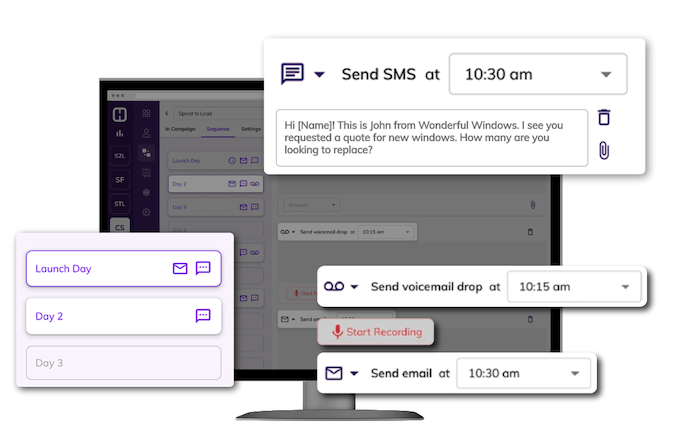
You can create different sequences for new leads, quoted prospects, dormant customers, customers with upcoming renewals, and more. And the importance of a series vs a one-off message is that it takes an average of eight touches to get a response.
AI now has a number of applications meant to help support your business. And with AI being the way of the future, it's important to stay up to date with the trends and prepare your business for AI.
When you lean into AI, you open your team to tools that help agents in all parts of their job. AI can provide call transcripts and sentiment analysis to agents, giving them back end support while your reps are actively engaging with customers. Agents can also take advantage of front end support and have AI interact directly with customers.
For example, Hatch Assistant includes AI bots that text with customers for your, boosting your team's productivity and efficiency. Whether engaging inbound leads, confirming appointments, or following up on quotes or jobs, your Hatch bot handles customers swiftly and with the same care and dedication to your business as any human.

Not sure how AI would look engaging directly with your customers? Take Hatch AI for a test drive and see for yourself!
The typical team structures for many call centers today are still based on a call-first approach. But with the introduction of a multi-channel strategy and automation, this structure is no longer efficient. In fact, it may be hindering your productivity and growth.
Take a look at this chart comparing a traditional call center structure with our recommended call center structure. In the traditional model, the sales manager is at the top of the hierarchy and often responsible for more than they can handle while also ensuring revenue growth.
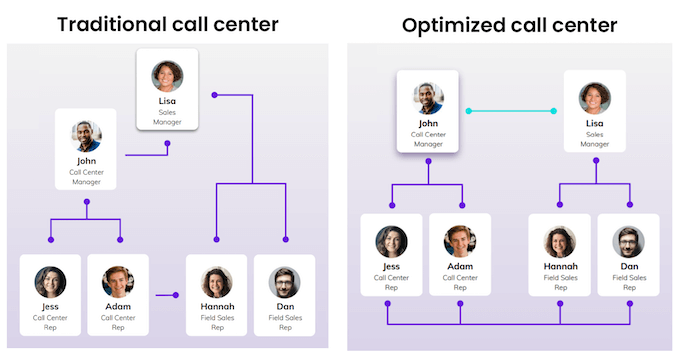
With our recommended model,
With this model, the responsibilities are distributed more evenly, allowing both the sales manager and call center manager to focus more on strategy and training. The roles are also more discreet, which helps to prevent opportunities from falling through the cracks and improve productivity.
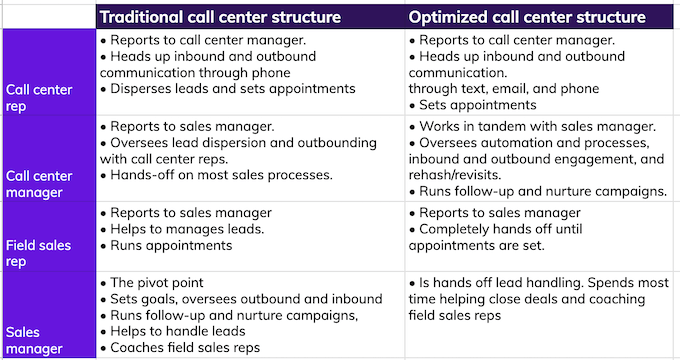
Most of the companies we talk to are reaching about 20-30% of their leads. So let’s do some math. (Don’t worry, we’ve done it all for you, you just need to follow along.)
So let’s say your contact rate is 20% and your booking rate on the leads your contact is 40-50%. That means that if you buy 500 leads, you connect with 125 of them and 62 of them book appointments. This is a 12% overall set rate on total leads.
Now let’s say your contact rate is 80%. Now, you’re reaching with 400 of those leads, which means you’re booking 200 appointments. Which means you have a 40% set rate on your total leads. This is more than tripling your overall set rate.

So how do you increase your contact rate to 80%? By reaching out to leads within five minutes. How do you do that? We’ve got a post on 10 ways to increase your speed to lead. But spoiler alert: the key to this is automation. When businesses integrate their lead sources with Hatch and automate their outreach (that is, multi-touch, multi-channel outreach over multiple days), they achieve this 80% reach rate (or higher)—with fewer reps and in far less time.
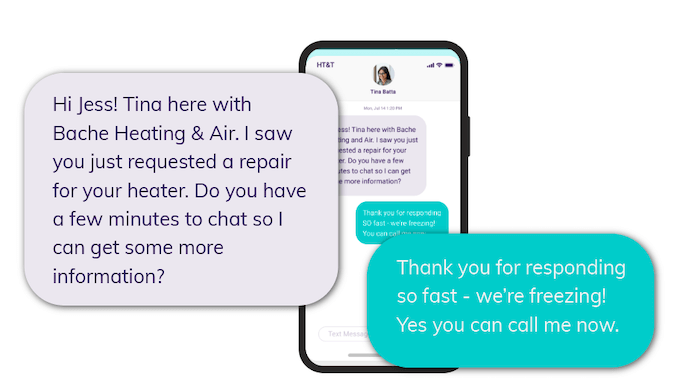
Just about every business we talk to has one of two problems: either their revenue is not where they want it to be, or they think that what they’re making is as good as it gets. The truth is, you can do a lot better. And the answer to this is not more or better leads, or more or better employees. It’s better follow-up.
Sales is not keen on follow up. A new lead actively pursuing your business is far more appealing than someone you need to chase down. But the reality is, homeowners today need and want follow-up, and if you implement the right follow-up strategy, it can become the most gratifying part of your job.

It takes 5-12 touches to close a deal.
We’ve seen call centers unlock thousands, even millions in additional revenue just by improving their sales follow-up and rehash strategies. What does this look like?
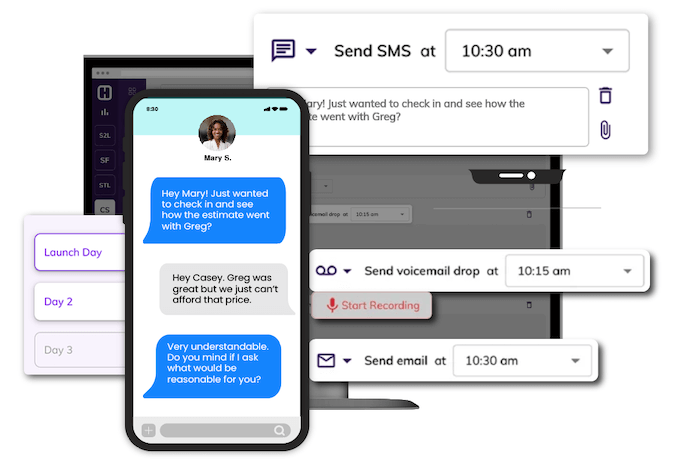
This, of course, requires automation. If you want more information on this, you can learn how to automate your sales follow-up here or download our guide The #1 Trick to More Contractor Sales, which contains plenty of templates you can use.
Employee retention is one of the biggest challenges for call centers. Today, there are all kinds of ways to improve employee retention—with company culture, promotions and pay raises, added perks and benefits, and more—and these are worthwhile causes. But there’s another way you can improve retention, and that’s through automation and AI.
When automation and AI are handling the menial and repetitive tasks, call center reps then have more time to focus on the mission-critical responsibilities that both drive revenue and bring them more job satisfaction. It’s a win-win.

Here are just a few of the many ways you can use automation and AI:
And of course, as mentioned earlier by automating your outreach for leads, prospects, and customers, all that’s left for your employees to do is to engage with those who are responding. They’re no longer endlessly calling unresponsive homeowners for hours on end. Add in an AI-powered chatbot that can book appointments and you’ve got some very productive, very satisfied team members.
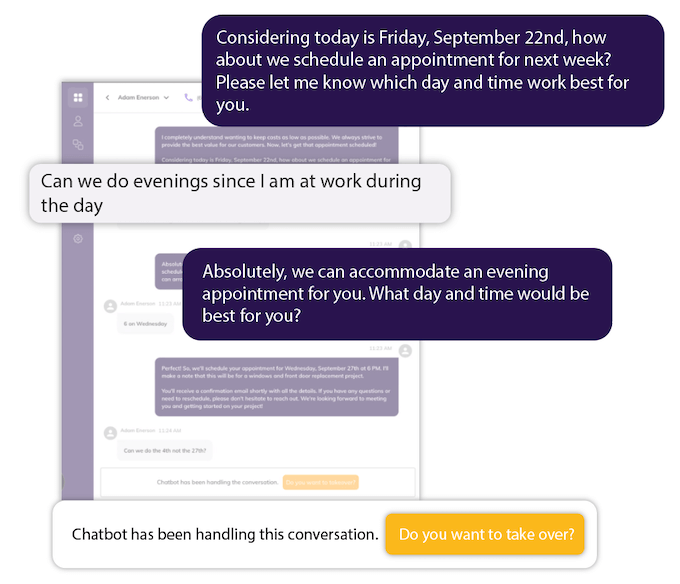
If you’re just getting started with AI, here are some free AI tools you can try out for your call center.
Let’s finish off with some examples of home improvement call centers that increased their set rates, close rates, and revenue with the strategies outlined in this guide.
Company: Kohler
Location: Nashville, Tennessee
Number of locations: 8
Contact center size: 14 reps
Problem: Lead sources (web forms, Modernize, HomeAdvisor) were routing to reps to call via outbound dialer. All rehash and sales follow-up was done manually. Appointment confirmations were done via dialer with manual processes and one touch point
Solution: With a direct integration with all lead sources, Kohler saw increased speed-to-lead with fewer reps. Automated multi-touch rehash/revisit using text, email and voicemail with personalized outreach. Kohler implemented a six-touch follow-up and adopted playbooks for price objection response handling. Appointment show rate increased and reschedule rate increased.
Results:
Company: NewPro
Location: New England
Number of locations: 2
Contact center size: 6 reps
Problem: Leads (from web forms, Modernize, and Homeadvisor) were pushing into a dialer and CRM. Rehash and sales follow-up was conducted with a traditional dialer and manual “clicking” processes. Database mining was an afterthought.
Solution: Direct integration with all lead sources, increasing speed-to-lead with automation and fewer reps.
Automated multi-touch rehash/revisit using text, email and voicemail with personalized outreach, 6 touches and price objection handling responses. Created “outbound” messaging team to mine their database and set appointments.
Results:
Company: Reborn Cabinets
Location: Southern California
Locations: 3
Call center size: 4 reps
Problem: HomeAdvisor leads were getting dialed from an automated dialer. Rehash and sales follow-up was a manual “clicking” process. Canceled appointments were getting dialed in a round-robin process.
Solution: Direct integration with HomeAdvisor, automating text, email and voicemails in less than 5 seconds. Automated multi-touch rehash/revist using text, email and voice with personalized outreach. Reborn adopted a six-touch cadence and Hatch’s playbooks on price objection response handling. Additionally, Reborn automates campaigns for canceled appointments via text, email, and voice with 5 touches.
Results:
Problem: Like many others, one Michigan-based remodeling company faced shortages during the pandemic, including smaller teams, reduced budgets, and fewer leads. It felt near impossible to stay profitable with fewer resources.
Solution: They began using Hatch to automate outreach for initiatives across their funnel, including:
The result? In one month alone, in the middle of the pandemic, they achieved:
With these seven strategies, you can turn your call center into a revenue generator for your home improvement business, through increased appointments, sales, retention, and ROI. Here’s a recap:
1. Open up digital communication channelsA comprehensive list of the best home improvement call center dialer software.
See how your sales, marketing, and operational performance stacks up against competitors and use our tips to improve in each area.
Learn exactly how Hatch helps you grow your revenue, through more efficient and effective communication across the customer journey.
Be the first to know about new sales and marketing insights to grow your messaging strategy with leads and customers.